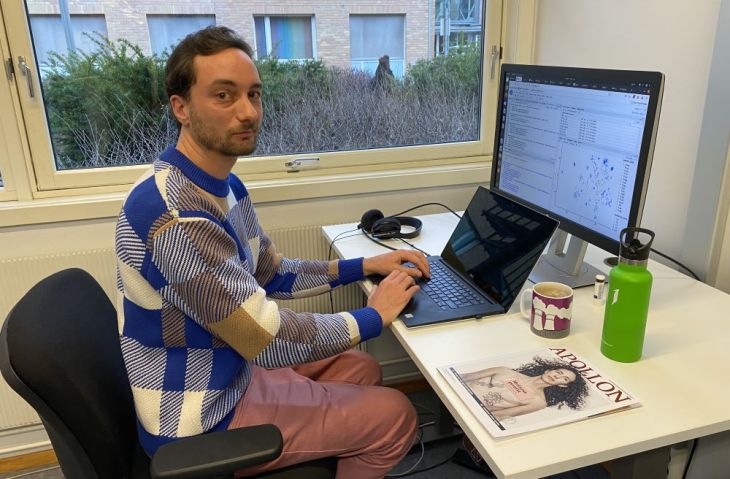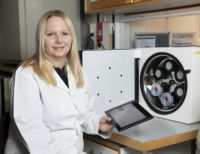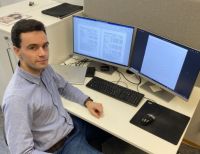Researchers at the Medical Faculty at the University of Oslo have helped to develop a new method which provides an overview of several antibiotic-resistant bacteria at the same time. This can be a major breakthrough in the fight to combat serious infections in hospitals.
Harry Thorpe is senior engineer at the Department of Basic Medical Sciences, and lead author of the study which describes a new method in the fight against serious hospital infections. Photo:Cecilie Bakken Høstmark, UiO
Bacteria are normally found both inside and outside the body without causing any harm, so-called «colonisation». But if dangerous strains of bacteria get into our bloodstream due to a weakened immune system, they can cause serious and life-threatening infections if they are not effectively treated with antibiotics.
Antibiotic-resistance can result in many deaths
Some of these bacteria are resistant to antibiotics and this poses a serious challenge to health workers. Infections caused by such bacteria are a major problem in hospitals worldwide and these bacteria, which do not respond to treatments, are expected to cause more deaths than cancer by 2050.
– Based on bacteria samples from Italy, we have now developed a new technique for analysing the genetic material of bacteria so that we can trace the spread of several so-called “super bacteria” simultaneously, for example at a hospital, says chief engineer and lead author of the study Harry Thorpe at the Institute of Basic Medical Studies (IMB).
Over the last 15 years, surveillance of the bacteria’s genetic material has become a potent and important tool for tracking the development of pathogenic bacteria and viruses.
– This has provided us with valuable knowledge that can help us control the spread of diseases, adds Thorpe.
Current tests only provide a partial snapshot
Some hospitals test for antibiotic-resistant bacteria when patients are admitted to hospital, but no system currently exists for effectively tracking all the multi-resistant bacteria present throughout an entire hospital. With the methods currently in use, only one single strain of bacteria from one sample is grown at a time. An analysis is then carried out of the entire genetic material (whole genome sequencing) for all these bacterial strains separately.
This involves a lot of work, takes several days and provides only a partial snapshot of all the clinically relevant bacteria present in one sample.
– Our study is an example of how we can use the benefits of the field of genomics to provide us with a complete picture of antibiotic-resistant bacteria in intensive care wards and other hospital locations. Antibiotic-resistant bacteria multiply and spread rapidly and our tracking methods must therefore keep up with them, emphasises Thorpe.
Many have contributed to the study
The new method was developed and tested by scientists at the University of Oslo, the Wellcome Sanger Institute in England, Fondazione IRCCS Policlinico San Matteo in Italy and several other collaborators.
– Through our “proof of concept” study, this approach can now be safely implemented in future research in order to capture the full breadth of high-risk bacteria in an area. The method can hopefully also be used by hospitals to help track and limit the spread of bacteria resistant to treatment, comments professor Jukka Corander at IMB. He is co-author of the study and like Thorpe, also affiliated to the Wellcome Sanger Institute.
The article was recently published in The Lancet
https://www.thelancet.com/journals/lanmic/article/PIIS2666-5247(24)00113-7/fulltext#secsectitle0010
Funding
The study was financed by the Trond Mohn Foundation, the Research Council of Norway, the European Research Council, the Academy of Finland (Flagship Programme) and the Wellcome Sanger Institute in England.
















